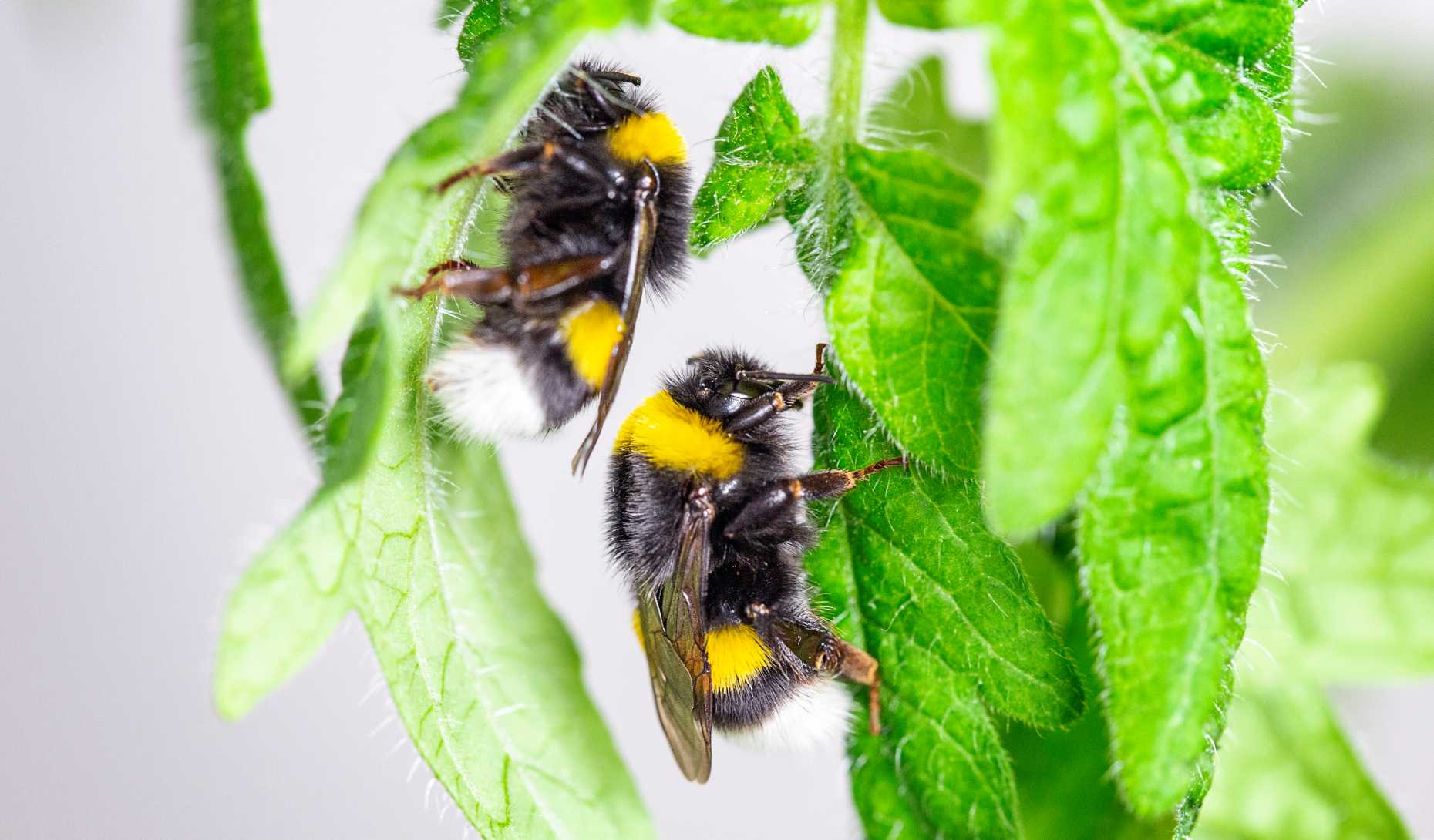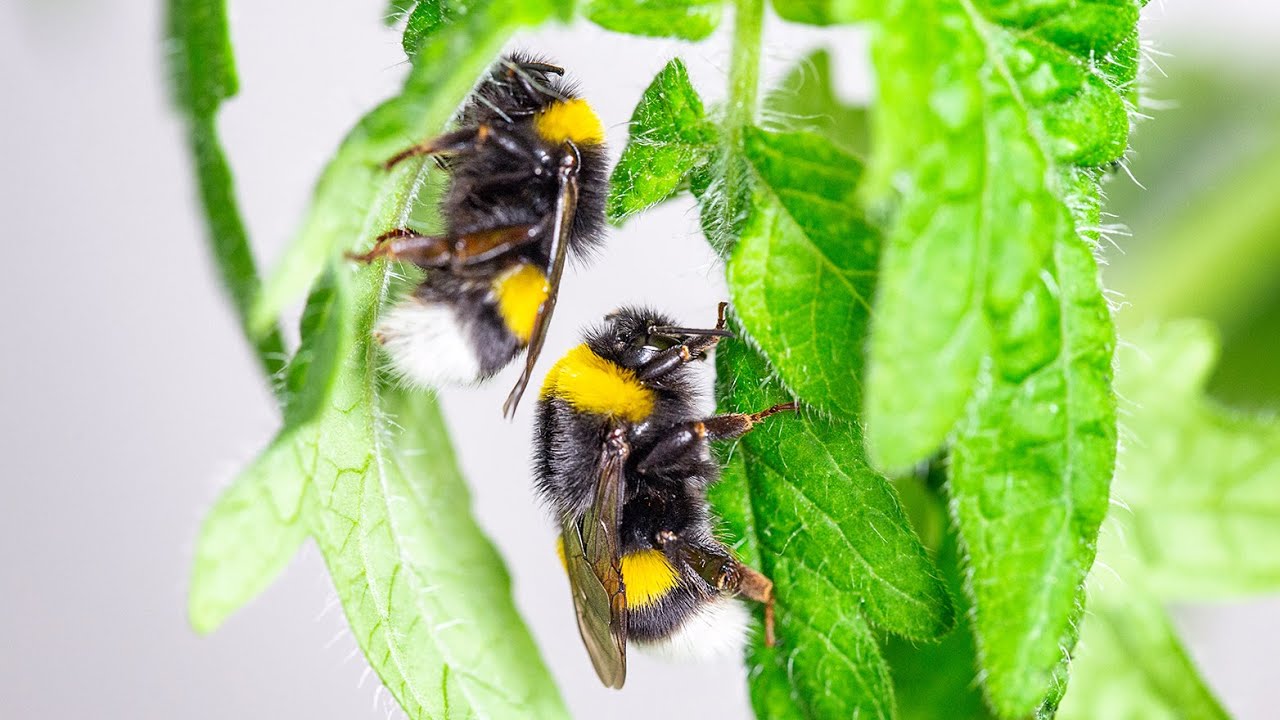Plant-pollinator interactions

Maintaining phenological synchrony with flowers is a key ecological challenge for pollinators that may be exacerbated by ongoing environmental change. Recently, we documented a previously unknown mechanism by which bumblebees appear to directly influence the timing of flower production (Pashalidou et al., 2020, Science: DOI: external page10.1126/science.aay0496call_made).
We found that bumblebee workers damage plant leaves and that this can lead to dramatic acceleration of flowering by damaged plants, compared to undamaged or mechanically damaged controls. Furthermore, bees engage in this behavior more intensely when pollen availability is limited.

Subsequent investigation has revealed damaging behavior in numerous wild bumblebee species. While the adaptive significance of this behavior is uncertain, damage-induced acceleration of flowering may help bees mitigate temporal gaps in floral resource availability during colony founding and development. Furthermore, this interaction might benefit bumblebee-pollinated plants as well as the bees themselves.
In ongoing work, we are trying to understand the specific mechanisms by which bee damage affects plant flowering, as well as the ecological
and evolutionary significance of leaf-damaging behavior.
Selected papers
Pashalidou, FG, H Lambert, T Peybernes, MC Mescher & CM De Moraes (2020) Bumble bees damage plant leaves and accelerate flower production when pollen is scarce. Science 368 (6493): 881-884 doi: external page10.1126/science.aay0496call_made
Kariyat, RR, TG Bentley, CT Nihranz, AG Stephenson, CM De Moraes & MC Mescher (2020). Inbreeding in Solanum carolinense alters floral attractants and rewards and adversely affects pollinator visitation. American Journal of Botany in press
Haber AI, JW Sims, MC Mescher, CM De Moraes & DE Carr. 2019. A key floral scent component (β-trans-bergamotene) drives pollinator preferences independently of reward quality in Mimulus guttatus. Functional Ecology 33:218-228 doi: external page10.1111/1365-2435.13246call_made
Petanidou T, MV Price, JL Bronstein, A Kantsa, T Tscheulin, R Kariyat, N Krigas, MC Mescher, CM De Moraes & NM Waser. 2018. Pollination and reproduction of an invasive plant inside and outside its ancestral range. Acta Oecologica, 89: 11-20. doi: external page10.1038/31219call_made
